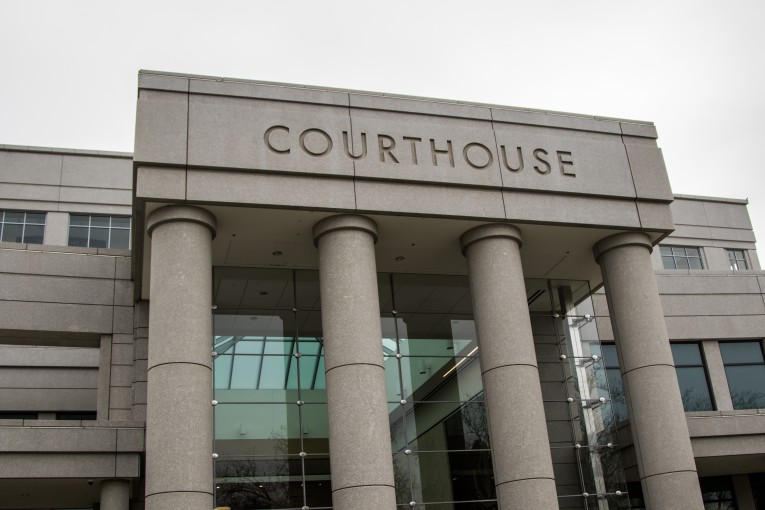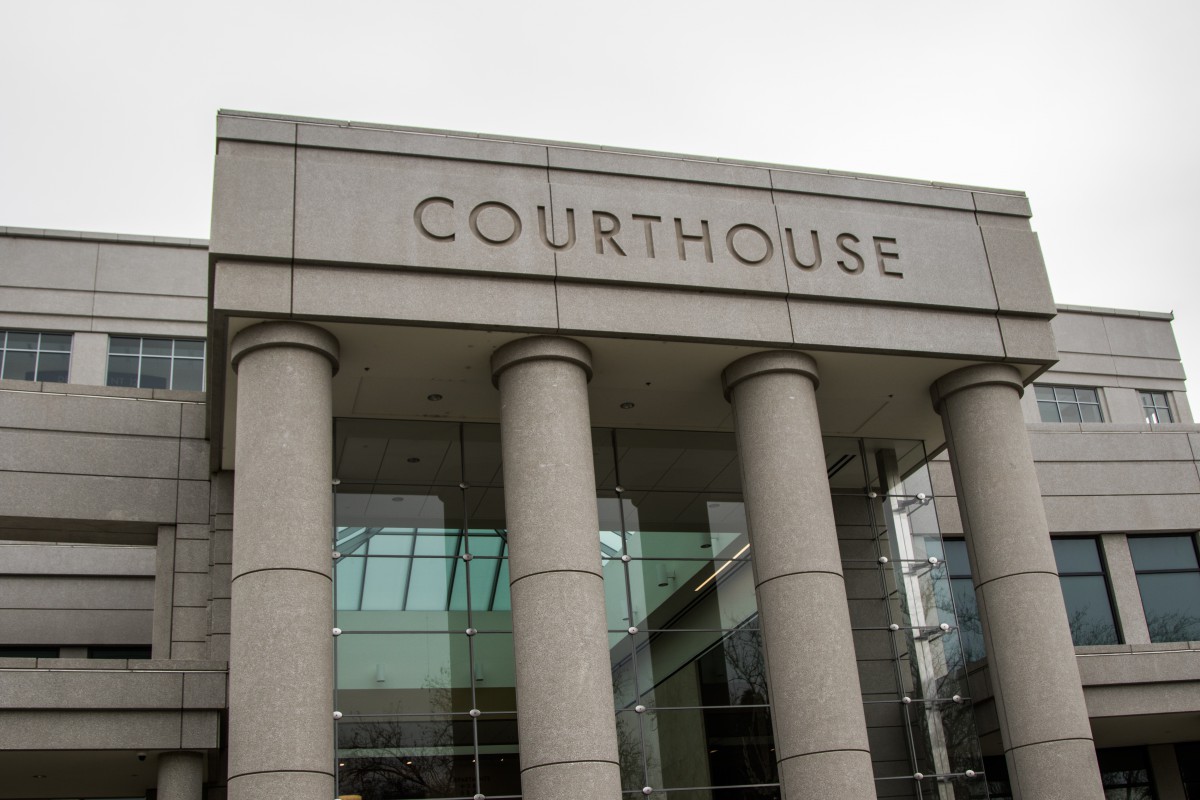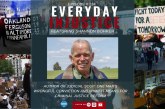

The prosecution against Christian Rizo for attempted murder suffers from some classic problems. First there is no real physical evidence tying Mr. Rizo to the crime. They never found a gun and had to rely on two questionable witnesses – both of whom took deals to turn state’s evidence, both of whom had ample reason to lie and both whose story had holes in them.
Defense Attorney Jesse Ortiz argued that there was no evidence Mr. Rizo knew that police were there and no evidence that he intended to kill anyone.
“There was no evidence at all that anyone on East Street could know there were officers behind that gate,” Mr. Ortiz argued to the jury. It was hard to imagine how the DA could get an intent to kill from the evidence presented, beyond a reasonable doubt.
There is, however, at least some evidence that Mr. Rizo could have been the shooter. The witness, Adrianna Pena, has some questionable credibility, but the defense really did not go after her during closing arguments. Nor did they seem to dispute that Mr. Rizo was in the car or that shots were fired that night.
That leaves the defense with a tougher task – to claim that Ms. Pena somehow didn’t see who shot the gun from her vehicle as she drove past Casa Del Sol on East Street in Woodland.
In her testimony, Ms. Pena claimed that he saw the police lights, had his gun and said, “Should I?” And she responded, “You wouldn’t.” He then fired two shots.
The defense argument that it may have been the guy in the back of the vehicle strains some credibility – although she never saw the defendant fire the shots, so she did not know for sure. Moreover, there were also shots fired off the Gum Street overpass and some evidence that it might have been Mr. Singh in the back seat rather than Mr. Rizo in the front seat who fired those shots.
Mr. Ortiz argued that Ms. Pena “didn’t actually see who fired the shots.” However, he acknowledged that she did see, according to her at least, “Mr. Rizo with a gun in his lap before the shots were  fired.” Again, he didn’t attempt to question that information. But despite Rizo being right next to her, she never saw him pick up the gun and shoot it.
fired.” Again, he didn’t attempt to question that information. But despite Rizo being right next to her, she never saw him pick up the gun and shoot it.
“Maybe it’s because Mr. Singh was the one who fired the shots?” he asked. That’s a point that Deputy DA Michael Vroman roundly disparaged, but there is one piece of information that lends it at least plausibility.
One connection point is that Evan Zavala told the police that Mr. Rizo later fired additional rounds off the Gum St. overpass. They found those bullets and matched them to the one in the cop car.
Mr. Ortiz argued that Ms. Pena directly contradicts this testimony. She said after those shots that she heard, “there were no more shots fired from that vehicle.”
They dropped off Mr. Singh near the Gum St. overpass and Mr. Rizo stayed with her. The second shots were popped off only after Mr. Singh was dropped off – which led Mr. Ortiz to conclude that Mr. Singh did the firing.
Where the case is weakest is on the attempted murder charges.
First problem – Mr. Ortiz introduced evidence of photos, about three stills, that cast serious doubt as to whether the police officers had their lights on and flashing at the time of the shooting. They testified to it, but the evidence was weak.
Sgt. Frank Ritter testified that when he parked his police cruiser, “his overhead lights were on.” Detective Maribel Cortez also testified that the lights were on.
“The problem is that they were wrong,” Mr. Ortiz explained. He took a still photograph, which he introduced into evidence, from the dash cam of Sgt. Ritter’s vehicle, to show that, at least at 12:30 am, about 40 minutes before shots were fired, there were no lights.
“We can see from this view, that there are no lights on at that time,” he argued. “That area back there is as dark as it looks in this picture.”
Adrianna Pena provides the key testimony here. She said, as they approached, in the distance she could see lights. But Mr. Ortiz argued that the lights weren’t coming from the area where Sgt. Ritter was located, they were coming from the back of the trailer park.
Through the photos, Mr. Ortiz repeatedly points out that “it’s dark” and “you can’t see onto the street” and “they can’t see in from the street.”
This is key information because Mr. Vroman argued that Mr. Rizo should have known that there were cops in this location.
Mr. Vroman attempted to resurrect the evidence by arguing maybe the photos show evidence of lighting, but that brings at the very least reasonable doubt for the defense – could be is not proof beyond a reasonable doubt.
Without the lights, the photos show there is no way that Mr. Rizo or anyone would have known there were police there.
The first problem – even if Christian Rizo was the one who shot, he couldn’t have seen whom he was shooting at. “You can’t see past this fence from East Street,” Mr. Ortiz told the jury.
Second problem, he was basically shooting from a great distance through a narrow slat in a security fence. Again, even if he knew there were police there, it’s an almost impossible shot. Although somehow the shot ended up coming close, hitting a car.
The defense argued he more likely shot into the ground. Mr. Ortiz asked where the second bullet went. The one that did hit the car, “it’s not a direct shot, it’s impossible.” He argues, “The only explanation is the one bullet hit somewhere on the ground then it ricocheted up, through the gate, and into the officer’s car.”
There are other problems as well. Mr. Vroman’s theory of the shooting was to distract the police from their pursuit of Mr. Gonzalez and Mr. Velasquez, but Mr. Ortiz countered convincingly that they had no way of knowing whom the police were pursuing at the time.
DDA Vroman in his rebuttal countered the improbability of hitting as close as he did on a ricochet and dismissed it as “a magic bullet” in reference to the Seinfeld skit on the “magic loogie.” The only problem is his own theory seems almost as improbable.
The key witness, Evan Zavala, testified that the reason they went over there in the first place was to provide cover for the two murder suspects who also happened to be in the same gang as Mr. Rizo.
Mr. Ortiz pointed out that Mr. Zavala had a vested interest in claiming what he did against Christian Rizo. He said, “I told the officers this information because I wanted to save myself from a very lengthy prison sentence.”
However, Mr. Ortiz argued that there was no evidence found that corroborated Mr. Zavala’s story.
Mr. Zavala testified that Mr. Rizo found out about them due to standard chatter on his Facebook page.
They looked at August 30, 2016, and found “there was nothing posted on that Facebook page on that night. That directly contradicts what Mr. Zavala said.”
Moreover, “at the time when the shots rang out, the suspects weren’t even known.” The police had not found them yet, so no one knew who they were, Mr. Ortiz told the jury.
That was a big hole in not only the story by Mr. Zavala, but the entire theory of the crime by the prosecutor – that the reason he shot at the cops was to distract them and give Mr. Velasquez and Mr. Gonzalez time to escape.
In addition, Mr. Ortiz cast doubt on whether Zavala had these conversations with Mr. Rizo at all. Mr. Zavala said he talked to Mr. Rizo two days later, but two days later Mr. Zavala was picked up on a sweep.
Mr. Ortiz argued that they couldn’t have spoken in custody, because it would have been recorded.
Moreover, he argued that Ms. Pena contradicted this claim as well, in testifying that there were no discussions about either Justin Gonzalez or Alexis Velasquez. She testified that she decided where to go that night. At no point did Mr. Rizo tell her to go anywhere.
In his response Mr. Vroman argued that Officer Richard Towle claimed he heard as Mr. Rizo fired the shots, “F*** you n**** cops.” That is what he offered as evidence that Mr. Rizo knew that there were cops there.
Possible. But again, did Mr. Towle hear that? No one else did, including Ms. Pena in the car. Mr. Vroman explained that away, saying that she was focused on driving, but it seems a little too convenient.
Based on what we know, there doesn’t seem any reasonable way to conclude there was a real attempt at murder here. Whether it was Mr. Rizo who fired the shots is plausible, but debatable.
—David M. Greenwald reporting







So, if it is not “rightly charged”, everyone gets a “pass”?… no shots were really fired, no one in jeopardy, no damage to public vehicles?
I get where the “attempted murder” charges are not likely to stand up to a rigorous standard of “beyond reasonable doubt” for one individual, on the specific charge, but does that mean it didn’t happen, that the car wasn’t there, and no one in the car fired shots at officers? No crime?
Or, can the jury find “guilty” on a lesser charge? Whoever fired shots at PD (unless that is a fiction) should have a lifetime ban on owning or possessing a weapon, particularly a firearm, in my opinion. Also, prison time and/or psychiatric care.
But even then, surrendering a weapon, based on a much lesser circumstance, didn’t prevent the death of a young PD officer, too recently, in Davis. Wonder, if that young officer and the one accused (never tried in a court of law, so no jury has found him “guilty”) had both survived, what the charges would have been, and what “court watch” would have to say about overcharging and reporting on the trial…
We’ll never know.
Dawns on me, with the presumption of “innocent until proven guilty, beyond all reasonable doubt, by a jury of his peers, in a court of law”, Limbaugh is/was an ‘innocent’ individual… I just can’t “get there”…
As attorneys argue – reasonable doubt is not beyond all doubt. There are two layers of reasonable doubt in this case. First there is no physical evidence tying Rizo to the shooting, so you have to rely on witnesses. Both witnesses testified in exchange for favorable consideration from the prosecutor. That’s an incentive to lie. The second problem is that both stories have holes in them.
If it’s not rightly charged, the jury can acquit on the attempted murder and decide if the guy fired shots (he’s charged with that) and convict him of that. There is some question as to whether he did even that, but more evidence there than of attempted murder.